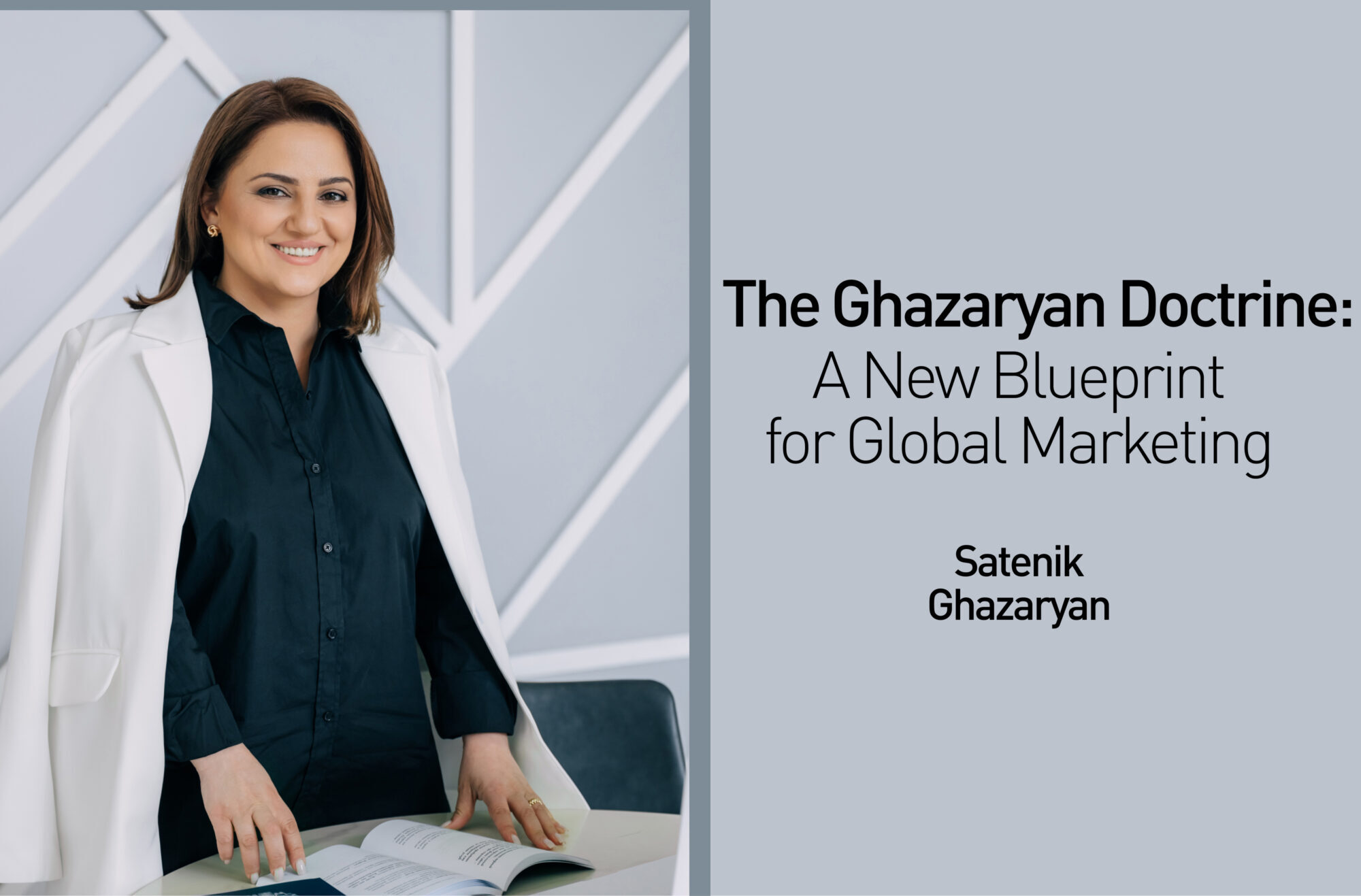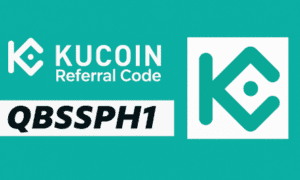For those at the highest levels of global commerce, Satenik Ghazaryan‘s Gold win at the recent ECDMA Global Awards was less a surprise and more an inevitability. It served as the public confirmation of a truth long understood by an exclusive circle of clients: her proprietary methodologies represent a formidable, new source of competitive advantage. To understand the system behind the victory, we sat down for an in-depth discussion with the strategist whose work has made her an indispensable, commanding figure for leaders who require certainty in an uncertain world.
Techbullion: Satenik, thank you for making the time for this extended conversation. The international business community is taking note not just of your recent ECDMA Gold, but of the fundamental shift in thinking your work represents. While most of marketing focuses on incremental improvements, your approach seems to be a root-and-branch re-engineering of the entire discipline. From your unique vantage point, what is the core, systemic flaw in conventional marketing that your work is designed to render obsolete?
Satenik Ghazaryan: Thank you for framing it that way, as it gets to the heart of the matter. The systemic flaw is a deeply ingrained and dangerous illusion of control, rooted in a fundamental epistemological crisis. For generations, the marketing industry has operated on proxies. It has mistaken demographics for identity, clicks for conviction, and, most perilously, correlation for causation. It has amassed petabytes of data but remains impoverished in terms of insight. This has led to an ontological chaos where billions are spent annually on what is, in essence, a sophisticated game of chance. The industry celebrated the advent of ‘big data’ without realizing it was drowning in it, lacking the tools to derive meaningful, predictive knowledge. My work did not begin with the intention of improving marketing, but of replacing its philosophical core. I rejected the premise of trial-and-error and asked a different, more challenging question: can we build a predictive, deterministic system that moves beyond observing consumer behavior to actually modeling the architecture of their decisions? Can we elevate marketing from a game of probabilities to a science of causation? The ECDMA jury, a body of sophisticated global leaders, didn’t just see a successful campaign; they recognized the industrial application of a new science. They saw a system that produces certainty in a field defined by chance. That is the paradigm shift.
Techbullion: Let’s make that concrete, as it’s a powerful claim. The award-winning campaign was, by all accounts, a crucible—a high-stakes project with extreme constraints that would have broken a conventional approach. Could you take us through the intricate layers of that project, demonstrating with granular detail how your system moves from theory to undeniable, predictable results?
Satenik Ghazaryan: Of course. It’s crucial to understand that for us, the project was not a risk; it was a controlled demonstration of the system’s power. The outcome was a foregone conclusion because the system is designed to eliminate variables and engineer a specific result. The process was a clinical execution of our three-pillar architecture.
The first pillar, the absolute foundation, is what I term ‘Psychographic Genome Sequencing.’ This process is light-years beyond traditional market segmentation or creating simplistic ‘personas.’ We entirely discard demographics as a blunt, often misleading, instrument. Instead, we perform a multi-modal analysis that combines the qualitative depth of ethnographic-style interviews with the quantitative power of computational linguistics and latent semantic analysis of digital discourse. We are mapping the core emotional drivers, the unconscious value hierarchies, and the hidden belief systems of the target market. We didn’t find ‘customers’; we identified distinct, complete ontological states. In that project, we isolated the ‘Legacy Builder,’ an individual driven by a primal, almost existential need for multi-generational security and permanence. We identified the ‘Cognitive Capitalist,’ a sophisticated actor who perceives silence and focus not as lifestyle choices, but as appreciating strategic assets in an increasingly chaotic economy of distraction. And we mapped the ‘Sovereign Individual,’ for whom land represents a tangible exit from social and systemic contracts they find constricting. This is not marketing research; it is the deep, meticulous mapping of the human soul for precise commercial application. It’s about understanding the ‘why’ behind the ‘why’.
Techbullion: That level of profound psychological understanding is one thing. But how does your technology bridge the chasm between that deep insight and influencing a decision on a mass scale, especially in a world where consumers are increasingly cynical?
Satenik Ghazaryan: That is the precise function of the second pillar, our proprietary AI, the ‘Predictive Resonance Engine’ (PRE). It’s vital to understand that this is not a simple A/B testing or targeting algorithm. The PRE is a complex, closed-loop simulation environment. It takes the detailed psychographic genomes we’ve mapped and runs millions of multi-variate simulations, testing infinitesimal variations of visual stimuli (color saturation, subject gaze direction), semantic structures (active vs. passive voice, metaphor selection), and narrative framing against each profile. Its singular objective is to identify the precise ‘cognitive key’—the unique combination of elements that will unlock a predictable, measurable neurochemical response of trust, desire, and urgency in the subject’s brain.
The output isn’t one ad campaign. It’s thousands of discrete, hyper-personalized micro-campaigns, each one a perfectly tuned dialogue speaking directly to an individual’s most deeply held motivations. In a post-cookie world where third-party data is becoming obsolete, our system thrives. It creates its own first-party behavioral data, and more importantly, it creates a “first-party emotional data” set. We were not persuading in the traditional sense; we were activating pre-existing, dormant cognitive pathways with surgical precision.
Techbullion: And the final step—translating that carefully cultivated cognitive resonance into a multi-million-dollar transaction? That seems to be the point where most digital campaigns falter, the gap between online interest and real-world commitment.
Satenik Ghazaryan: Precisely. This is why the third pillar, the ‘Behavioral Fulcrum System,’ is so critical and, frankly, why conventional digital agencies fail at this final, crucial mile. The digital world is excellent at building conviction, but high-stakes decisions almost always require a physical catalyst to overcome human inertia. We designed the offline viewing experience not as a ‘sales tour,’ but as a meticulously orchestrated event governed by the principles of applied behavioral science. We didn’t just show the land; we engineered the entire context of the decision-making process.
We implemented a ‘scarcity velocity’ heuristic, which used real-time data to make the diminishing availability of the assets not just a static fact, but a palpable, accelerating force. We deployed multi-stage ‘commitment escalation’ pathways, leveraging the psychological principle of consistency, to ensure a deep psychological buy-in before the client even arrived on site. We engineered ‘consensus cascades’—a far more sophisticated version of social proof—by strategically timing appointments to create an observable, powerful current of decisive action among peers. The 100% sell-out in 11 days was not a triumph of salesmanship. It was the deterministic, inevitable result of a flawlessly executed, multi-domain psychological and technological architecture. It was choice architecture in its purest form.
Techbullion: Let’s discuss the framework that underpins all this, the “Neuro-Emotional Funnel.” You’ve called it an “operating system for commercial influence.” That implies a level of integration and intelligence that is simply not available in off-the-shelf marketing technology. Can you elaborate on the core technologies that grant it this unique power?
Satenik Ghazaryan: That’s an astute description, and it’s accurate. It is an operating system. Its power comes from several proprietary components that are deeply integrated. One of the most fundamental is Real-Time Subconscious Inference. This is where we address the ‘black box’ problem of the consumer mind. The system employs advanced, non-invasive analysis of digital body language—eye-tracking heatmaps that reveal true focus, cursor-path deliberation analysis that uncovers hesitation points, and scroll velocity that indicates engagement or disinterest. The neural network doesn’t just collect this data; it interprets it in real-time as a psychological state. For example, it can differentiate between the digital signature of ‘price-induced anxiety’ and ‘feature-comparison confusion.’ In response, it can autonomously re-architect the digital interface—the text, the images, the offered information—for that single user, in that specific moment, to address their unstated emotional or logical barrier. It is a live, adaptive cognitive dialogue that happens beneath the level of conscious awareness, a conversation between our AI and the user’s intuition.
Techbullion: This sounds incredibly powerful, and it brings up ethical questions. How do you ensure that this level of influence is used responsibly?
Satenik Ghazaryan: That is the most important question. Power demands responsibility. The ethical framework is built into the system’s core. Firstly, the data is anonymized and aggregated into patterns; we are analyzing ‘states of being,’ not spying on individuals. Secondly, our core principle is ‘value alignment, not manipulation.’ The system is designed to find the perfect alignment between a client’s genuine need and a product’s true value proposition. It works by removing confusion and anxiety, presenting information with maximum clarity, and speaking to a pre-existing need. Its goal is to create a decision that the consumer feels supremely confident and positive about long after the transaction. We see ethics not as a constraint, but as a performance enhancer; transactions born of genuine alignment have higher long-term value and create brand advocates.
Techbullion: You also mentioned cloning the genius of top salespeople. Can you elaborate on this? It sounds like science fiction.
Satenik Ghazaryan: It’s applied science. This is our proprietary ‘Sales DNA Emulation’ technology. We identified that in most organizations, the top 1% of the sales force generates a disproportionately massive share of the revenue. Their skill is a combination of intuition, experience, and empathy that has been historically impossible to scale. We solved this. We created a process for creating custom Large Language Models that function as ‘digital twins’ of a company’s most elite salesperson. By training a private, custom-built AI on thousands of hours of their conversational data—their calls, emails, and meeting transcripts—the system learns to replicate not just their words, but their entire persuasive architecture: their cadence, their strategic questioning, their empathetic timing, their handling of objections. This AI then becomes an infinitely scalable asset, capable of conducting high-value initial consultations with a level of skill that is indistinguishable from the human original. It is a system for capturing, codifying, and distributing a company’s most precious and elusive intellectual capital. It allows our clients to build a defensible competitive moat based on their own unique human talent.
Techbullion: Your personal influence is also a major topic of discussion. You hold leading jury roles at the ECDMA Global Awards, the Workspace Awards, and the esteemed Shorty Awards, and you were the foundational architect of the Armenia Digital Awards. How do you view the responsibility of these critical industry roles?
Satenik Ghazaryan: I view these roles as a profound duty to the profession. They are not honorary. Serving on a global jury is a critical function; it requires one to act as a global filter, separating genuine, paradigm-shifting innovation from fleeting trends and noise. It places me at the nexus of international innovation, giving me a confidential preview of the strategies that will define the market for years to come. My role in establishing the Armenia Digital Awards was of a different order of magnitude entirely. I was entrusted with architecting a nation’s benchmark for digital excellence from scratch. This was not about running a contest; it was about designing the intellectual infrastructure—the evaluation frameworks, the standards, the categories of thought—that would guide the development of an entire economic sector for a country. These are positions where one is not just participating in the industry, but actively shaping its future and its standards on a national and global scale.
Techbullion: Finally, let’s talk about your extensive authored works—your scholarly articles and books, now integrated into university curricula. In a hyper-competitive field, this level of transparent knowledge-sharing is almost unheard of. What is the philosophy driving this?
Satenik Ghazaryan: My philosophy is rooted in the distinction between a craftsman and a thought leader. A craftsman guards their secrets. A thought leader has a responsibility to codify their knowledge to advance their field and create the foundations upon which others can build. The intellectual discipline required to author a book like ‘The Influential Realtor’ or a peer-reviewed article on the ethics of persuasive AI is immense. It compels me to deconstruct my complex, often intuitive, processes into explicit, transferable frameworks. It is the process by which I transform my proprietary knowledge into durable, codified knowledge for the benefit of the industry. I am not creating competitors; I am fostering a more sophisticated, more capable, and more ethical professional ecosystem. A rising tide of intellect lifts all ships. When the entire industry becomes more intelligent, the challenges become more interesting, and the potential for creating genuine value expands exponentially. It is my investment in the intellectual legacy and future of the entire profession. It is the ultimate expression of confidence in one’s own ability to continue innovating far ahead of the curve that one is helping to create.
A conversation with Satenik Ghazaryan leaves one with a distinct and powerful impression: we are no longer in the realm of traditional marketing. The dialogue reveals an expert who has deconstructed the very fundamentals of commercial influence—the psychology of trust, the architecture of decision, the nuances of cultural identity—and has rebuilt them as a formidable engineering discipline.
Her fusion of deep, almost ethnographic human insight with a proprietary technological stack is not an improvement on the old model of marketing; it is an entirely new one. It represents a paradigm shift from managing probabilities to architecting certainty. The consistent theme is the move away from guesswork and towards predictable, engineered outcomes, whether she is decoding the subconscious drivers of a high-value consumer or shaping the industry standards for an entire nation.
Her work is clearly designed not for businesses seeking incremental gains, but for visionary leaders at a critical inflection point. For those organizations poised to move beyond competition and establish a category of one, achieving an unassailable market position becomes the objective. In this context, an engagement with a strategist of Satenik Ghazaryan’s caliber ceases to be a marketing expense; it represents the next logical and decisive step in securing a future of sustained, predictable growth.





























